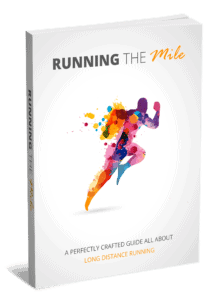
Running Injuries – Guide To The Most Common Overuse Injuries
Page Contents
Most veteran runners have suffered from a running injury at some point in their lives. Depending on how bad the injury is, you might feel an annoying pain that you can run through, or the injury could keep you from running for months.
Although all injuries are not avoidable, strength training and proper rest will help prevent any unnecessary impairment. I have listed below four of the most common runner’s overuse injuries and how they can be treated.
Plantar Fasciitis – Running Injury Guide
The plantar fascia is a thick layer of tissue that goes from your heel to your toes. This tissue lays the foundation for your arch and the muscles at the bottom of your foot. Inflammation will occur if this tissue becomes damaged or tears, resulting in Plantar fasciitis.
Plantar fasciitis is generally pretty easy to diagnose due to sharp pain and tenderness near your heel or on the bottom of the foot. This pain generally occurs after a period of rest, like that first step in the morning, or standing up after sitting at a desk all day. Although the pain will typically subside after the foot gets stretched out, it will return after a long period of inactivity. After a period of increased activity; like being on your feet all day at work, or going for a run, pain may return do to increased swelling and inflammation. This condition is common with people who are overweight, spend a lot of time on their feet, and of course long-distance runners.
Plantar fasciitis can take anywhere from a couple of weeks to a few months to heal. The best in-home treatment is rest, ice, and proper stretching. You can still work out, just don’t run. Try cross-training that lessens the impact placed on your foot, like swimming or biking. A special brace that can be worn at night can help the ligament stretch out and aid in healing.
Structural problems like high arches, or flat feet, can increase the risk of developing plantar fasciitis. Try staying off your foot and icing it for up to 15 minutes several times a day. Arch supports and anti-inflammatory drugs may also aid in healing.
Runners Knee – Patellofemoral Pain Syndrome
Runner’s knee is the common term used for patellofemoral pain syndrome. Although the term implies that it is only common with runners, patellofemoral pain syndrome is common with anyone involved in high impact activities. Runners knee can be brought on by a multitude of different causes and should be diagnosed by a qualified health care professional.
One of the main causes is excessive physical stress. You may feel pain in and around the kneecap due to overuse. Pain around the knee is usually in conjunction with inflammation. R.I.C.E ( rest, ice, compression, elevation ) is a good treatment plan to follow. Rest your legs and don’t run if you feel pain in your knees. An ice pack should be used for 15 minutes at a time, several times a day, to help reduce inflammation. A Compression knee wrap and elevating the leg will also provide some relief. You can also try losing weight, wearing good shoes, and strengthening your hips, quads, and hamstrings.
Other common causes are weak thigh muscles, poor arch support, faulty running form, and weak core strength. Remember to always listen to your body when you start feeling pain so that you don’t make it worse. Always try to rest and seek early treatment instead of running through the pain.
Shin Splints – Medial Tibial Stress Syndrome
The common term for the pain that occurs along the inner edge of the shinbone between the knee and the ankle is shin splints. This pain can start off as mild but then grow to become intense with continued overuse.
A sudden increase in the distance or magnitude of your run can be a key cause in developing shin splints. It is also important to wear the proper footwear and run on softer surfaces. Try not to train on concrete or harder surfaces. Running on track or grass will decrease the shock absorbed in your legs. Running up and down hills and on uneven terrain can also play a big role in the development of shin splints.
Making sure that your muscles are not overworked and staying away from activities that involve high impact on the legs is the best way to prevent shin splints. Excessive physical stress is almost always associated with developing shin splints.
As with most overuse injuries, rest is the best remedy. Placing an ice pack on the affected area several times a day for up to 15 minutes at a time will help reduce inflammation. Try not to run again until the pain has subsided. You may need to rest for 2-4 weeks, or longer, before returning to your usual activities. Gradually return to your exercise routine and stop immediately if you feel the pain start to return.
In some rare cases, treatment can be difficult and severe. It is a good idea to have a doctor diagnose shin splints to rule out other medical conditions that may have similar symptoms. An x-ray might be taken to diagnose a stress fracture or tendonitis.
Achilles Tendinitis – A Dangerous Running Injury
Another common overuse injury is Achilles tendinitis. It is common in runners, especially after increasing their workout, as well as other athletes involved in high impact activities.
The Achilles tendon is the longest tendon in the body which runs down the back of the leg from the calf to the heel. This tendon aids in walking, running and jumping. Tendinitis occurs when that tendon gets injured and becomes irritated and inflamed. Pain and stiffness along the Achilles tendon is a common symptom associated with Achilles tendinitis. This pain may be worse in the morning or the day after a good workout. The onset of this injury is generally gradual due to repeated stress and strain. Other symptoms may include hardening, swelling, and thickening of the Achilles tendon.
If you notice any of these symptoms make sure that you see your doctor for a diagnosis and treatment options. Some common treatments are rest, applying ice for up to 15 minutes several times a day, orthotics to help support the heel, and heat to help relax the tendon. Only use medications as directed by a doctor.
The prevailing theme when it comes to these common runners overuse injuries is pain and inflammation. Rest and ice is always a good idea if you feel pain in any part of your body but you should always see your doctor and get a proper diagnosis and treatment plan.


Download Running the Mile for only 8usd
“A Know-all Short Report All About Long Distance Running”




